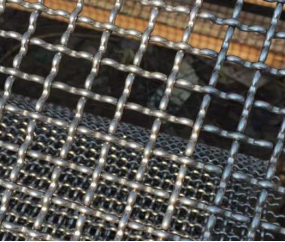Trends and Factors Influencing Barbed Wire Prices in Recent Markets
An Overview of Barbed Wire Prices Trends and Market Dynamics
Barbed wire, a vital agricultural and construction material, has been instrumental in fencing, security, and boundary establishment for decades. Its uses span from agriculture to military applications, making it a critical commodity in various sectors. Understanding the price dynamics of barbed wire can provide valuable insights into market trends and influences affecting its availability and cost.
Over recent years, barbed wire prices have seen fluctuations driven by multiple factors. One of the primary influences is the underlying cost of raw materials, especially steel. The price of steel, which constitutes the bulk of barbed wire, is affected by global supply chains, manufacturing costs, and demand in sectors like construction and infrastructure. When steel prices rise, it invariably impacts the cost of barbed wire, leading to higher prices in the market.
Another important factor influencing barbed wire prices is market demand
. In developing regions, increased agricultural activities and infrastructure development have created a higher demand for fencing solutions, thereby boosting barbed wire sales. Conversely, in more developed areas, the market may experience fluctuations as construction projects fluctuate, which can lead to variable demands for barbed wire.Seasonality can also play a role in pricing dynamics. For instance, the agricultural season often sees a spike in barbed wire purchases as farmers prepare their fields and livestock for the upcoming planting season. This seasonal demand can lead to temporary price increases. Conversely, off-peak seasons may bring prices down as demand dwindles.
barbed wire price

In addition to these factors, geopolitical events and trade policies can significantly impact barbed wire prices. Tariffs on imported steel or barbed wire can lead to increased local prices as manufacturers pass on these costs to consumers. Similarly, political instability in steel-producing regions can disrupt supply chains, leading to shortages that push prices higher.
Technological advancements in manufacturing processes can also influence barbed wire pricing. Innovations that enhance production efficiency can result in lower manufacturing costs, thereby potentially reducing retail prices. However, it is essential to balance this with the higher initial investment in new technology.
Moreover, competition within the barbed wire industry can affect pricing strategies as companies vie for market share. Brand loyalty, product differentiation, and pricing models can lead to a diverse pricing landscape where consumers may find varying prices for seemingly similar products.
Lastly, sustainability trends are emerging in the barbed wire market. With increasing awareness of environmental impacts, some manufacturers are investing in eco-friendly production methods, which may initially raise costs but can potentially offer long-term savings and sustainability benefits that appeal to a growing segment of environmentally conscious consumers.
In conclusion, barbed wire prices are influenced by a myriad of factors, including raw material costs, demand fluctuations, seasonal trends, geopolitical events, and technological advancements. Recognizing these elements can help stakeholders navigate the market effectively, whether they are manufacturers, suppliers, or end-users. As the industry evolves, staying informed about these dynamics will be crucial for making strategic decisions in purchasing and production.
-
Space-Saving Chain Fence Hacks Vertical Gardening with Cyclone MeshNewsJul.16,2025
-
Innovations in Iron Nail Wire Production for Modern ConstructionNewsJul.16,2025
-
Creative Uses of Wire Netting Fence in Modern Landscape DesignNewsJul.16,2025
-
Barbed Wire Fence Innovations in Anti-Climb TechnologyNewsJul.16,2025
-
Architectural Uses of Umbrella Nails for Aesthetic Roof DesignsNewsJul.16,2025
-
Architectural Uses of Razor Barbed Wire in Secure Urban DesignNewsJul.16,2025




